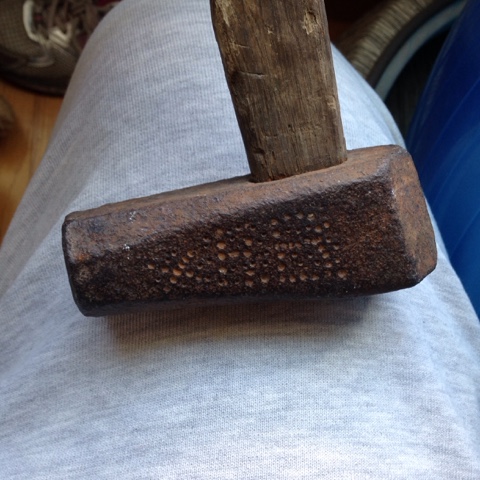 |
| All the files you need |
So once you have some raw materials and some files, you can make a few basic tools. An initial set doesn't need to be at all complicated. Just a hook and a tension wrench are all you need to get started. That noted, I have had great success with saw tooth rakes and they're not terribly hard to make. You can also start with a hook and leave the other end of your tool ready to shape once you figure out what you want to do with it. I make most of my tools double ended.
 |
| Double ended tools ready for final shaping |
A basic pair of one tension wrench that has a hook on the end opposite the wrench and a double ended tool with a hook on one end and a rake on the other makes a good basic set. The hook on the wrench can be used as a feeler to test locks for condition and to count the number of pins. The rake allows for rapid picking that can then be finished with the hook on it's other end as is often the case. Set most of the pins with quick raking and SPP(single pin pick) the last one or two. This also leaves SPP as a first option. This should open most Master, Ace and random Chinese locks with reasonable practice. With more practice and time, most any lock can be SPP'd. This set is not as easy for the untrained to use as the popular Bogota rakes but has far more potential in the long run and allows a student to better understand what they are doing.
The basic process is to cut half circles out of the bristles at the ends and then shape them into hooks as shown side by side in the third image. This should be easy enough to logic out. Use the round files for making round cuts and flat files to shape the hooks
 |
| Basic hook |
or rakes as shown in the fourth image. You could be very precise making these but you'll be close even if you aren't and the locks aren't that precise anyway. Just make sure to stack your peaks and valleys so that the peaks are points when you make a saw tooth and then round the end so it moves easily inside the lock.
Noteworthy points might be that my best hooks are almost all cut at about forty five degrees if you draw a line from the base of the arch to the end of the hook. You will almost certainly want to cut the inside of the arch before shaping the outside and then remove a lot of material from the shaft leading up to your tool end. The bristles are stiff and you want as little in your way inside the keyway as possible. Polishing is optional but if your raw material is particularly rusted or corroded but it doesn't take much and the tools do clean up a bit with use.
 |
| Different stages of completion of a saw tooth rake |
There are innumerable YouTube videos showing basic attack methods. Fewer deal with tool fabrication. My thought is that tool manufacture is at least as important as the skills one needs for using them. Given the ease of acquisition of bristles and the quality of the metal I focus on making my tools as shown.
Other materials commonly available are windshield wiper blade springs, good but too soft for my liking. That means easy to shape but they wear out much faster and bend easier when you don't wan them to. So, I have and do use these springs but they aren't my preferred stock. A similar common material with potential is bra under wire strips. There are certainly plenty of bras but not so many sitting around waiting to be robbed of the wires. These are also somewhat softer metal and not to my liking.
I'll leave it at that. A couple very basic tools you can get about anywhere and street sweeper bristles you can also get about anywhere and keep a few on hand for later or just find when you need one.
So go out and make a hook and I'll get to work on the next installment, how to make a tension wrench.




















